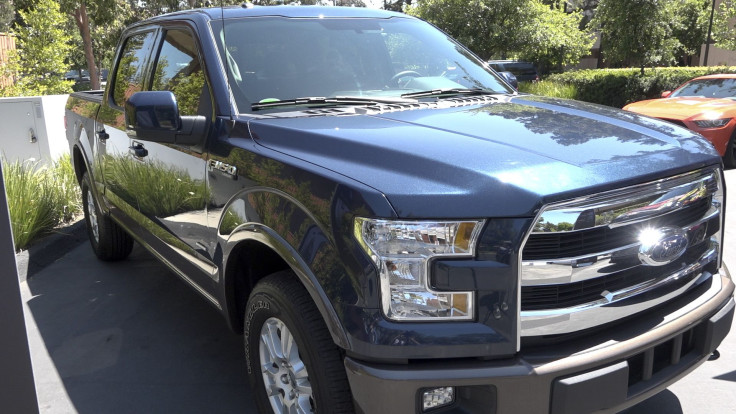Ford GT Supercar's Lightweight Materials Will Make Their Way To Your Car, Eventually [VIDEO]

Ford, like many other carmakers, has recognized that Silicon Valley is the place to be for technological innovations. The Dearborn, Michigan-based manufacturer invited journalists to its new Palo Alto, California, facility this week to see the company’s newest tech and material developments. Ford CEO Mark Fields was on site to answer questions about future materials and products; spearheading the company’s future lineup is the the new, carbon fiber-laden GT supercar.
The defining element of the GT is its weight: Ford has used a combination of lightweight materials like magnesium, carbon fiber, and carbon fiber-type materials to build their new supercar. But those materials aren’t exactly cheap -- the GT will cost around $400,000.
“It not only represents our highest level of performance,” Fields said in an interview with International Business Times, “but a whole decade of work into areas around lightweighting.”

Fields added that using the material is more than just a cost issue. “The carbon fiber manufacturing process is a very labor-intensive process,” he said, though the company is exploring cheaper processes and mixed materials through a partnership with the DowAksa chemical company. “We’re looking into not only bringing down the cost, but also to be more efficient with production volumes,” he said.
Translation: You can have all the carbon fiber you want right now from Ford if you’ve got the kind of disposable income to afford a nearly half million dollar supercar like Detroit Tigers pitcher Justin Verlander. Most people aren’t rich athletes, but there is good news for them as well -- Ford’s developing lightweight bits and pieces for normal cars. The result? A midsize sedan that weighs nearly 700 pounds less than current offerings.
These new materials can and will work for regular vehicles relatively soon -- probably within a decade. It has been done before.

Remember that Ford launched the last GT, a car made mostly of aluminum, 10 years ago. The company took the ideas from that car and implemented them in regular vehicles down the road. That’s why you can now buy an F-150 pickup with a copious amount of aluminum alloy; the material and manufacturing processes have become cheap enough to make fiscal sense on a mass-market scale.
Carbon fiber is an even bigger jump than aluminum, but when you see it (a realistic timeframe for smaller pieces is 3-5 years off, and larger implementation is about a decade away) it might not be on the vehicles you expect. Matthew Zaluzec, the senior technical leader for Ford’s global research and materials research division, explained that lightweight materials will most likely appear in segments with the most weight to shed first.
“You’ll see lightweighting applied to larger cars, trucks and SUVs first,” Zaluzec told IBTimes. He explained that heavier vehicles provide the most challenge for companies for two reasons: there’s physically more parts to them and therefore more pieces to consider lightening, and heavy vehicles tend to get worse fuel economy so the company’s overall EPA ratings stand to gain the most ground from lightening those segments.

Even when engineers figure out how to cheapen the process, don’t expect a completely carbon fiber family sedan in your driveway. It’s the bits and pieces, from suspension springs to internal engine parts to lightened rubber seals that you’ll get. All of those things together total hundreds of pounds of weight loss, which allows carmakers to put smaller, lighter, more fuel-efficient engines in vehicles (such as the 1.0L EcoBoost 3 cylinder seen in the lightweight Ford Fusion concept).

Less weight leads back to smaller engines, better performance and better fuel efficiency -- the three main goals every carmaker is striving for with traditional petroleum vehicles, goals Mark Fields said were taken to the extremes with the new GT.
“When you have a smaller engine that you have packaged more efficiently, think of the opportunities you could have,” Fields said. “It’s all around driving innovation to improve performance.”
© Copyright IBTimes 2025. All rights reserved.






















